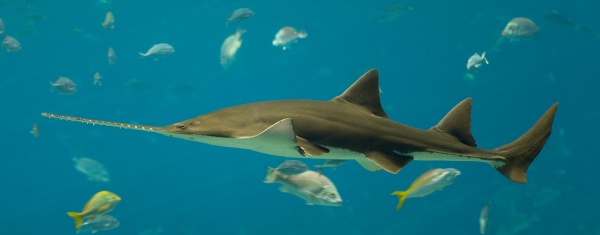Facts About Smalltooth sawfish
The smalltooth sawfish, a critically endangered member of the Pristidae family, inhabits the shallow tropical and subtropical waters of the Atlantic Ocean. Unfortunately, its historical range has drastically diminished, with sightings outside its current range often being cases of mistaken identity. These fascinating creatures prefer coastal marine and brackish estuarine waters with soft, muddy, or sandy bottoms. They are frequently found in areas rich with mangroves or seagrass beds.
In terms of appearance, the smalltooth sawfish is quite impressive. They can grow up to 7.6 meters (25 feet) in length, although most individuals are around 5.54 meters (18 feet) long. Their most distinctive feature is their saw-like rostrum, equipped with sensory organs that help them detect and manipulate prey. This rostrum is not just for show—it's a powerful tool used for feeding and defense, capable of delivering strong side-to-side strikes.
When it comes to reproduction, there's still much to learn about the smalltooth sawfish. Observations indicate that they engage in courtship behaviors and exhibit sexual dimorphism, meaning males and females differ in size or appearance. They reproduce through internal fertilization, and interestingly, some females can reproduce asexually through parthenogenesis, likely due to the difficulty of finding mates. This species is ovoviviparous, meaning they give birth to live young after a long gestation period.
The smalltooth sawfish faces numerous threats, including entanglement in fishing nets, habitat destruction, and slow population growth. These factors have led to their critical endangerment, making conservation efforts vital. The species is listed on the IUCN Red List, and their numbers have plummeted dramatically. Conservation initiatives are underway in the United States, the Bahamas, Cuba, Belize, Honduras, and Sierra Leone to protect the remaining populations. Additionally, the smalltooth sawfish is listed on Appendix I of the Convention on International Trade in Endangered Species (CITES), which restricts international trade.
Captive breeding and dedicated conservation programs are essential to ensure the survival of this unique and endangered species. Through these efforts, there is hope that the smalltooth sawfish can be saved from the brink of extinction.

 Mexico
Mexico